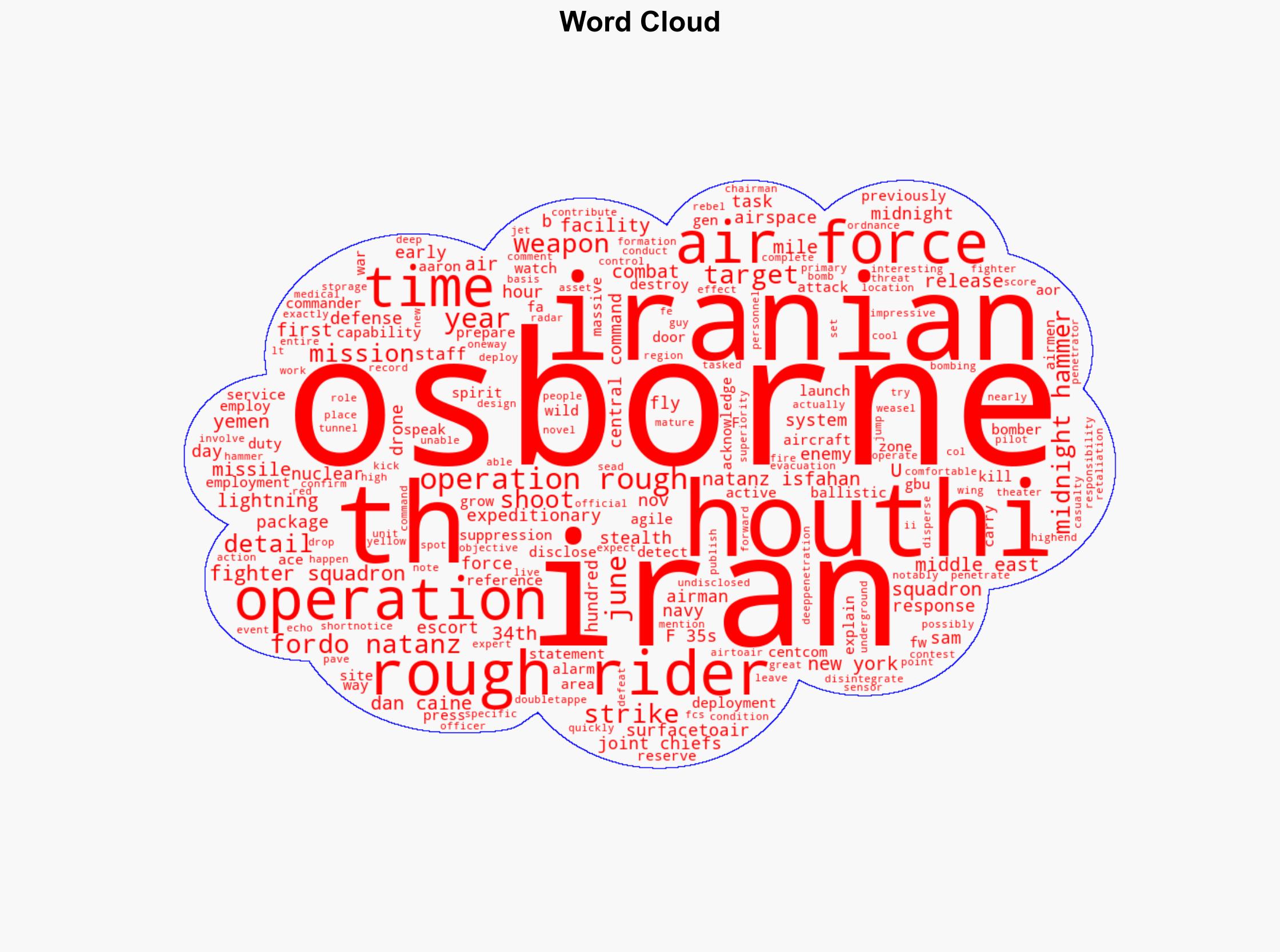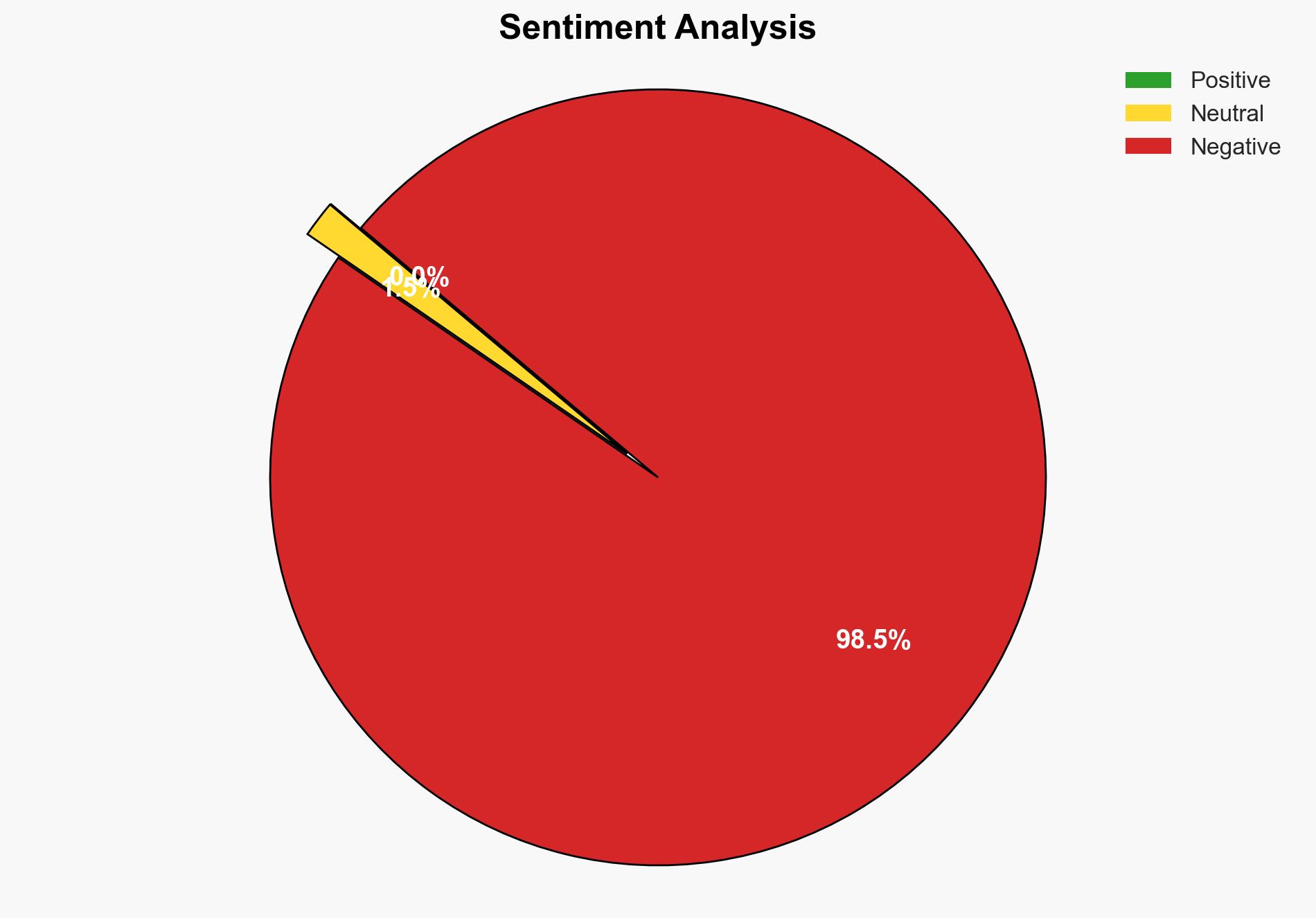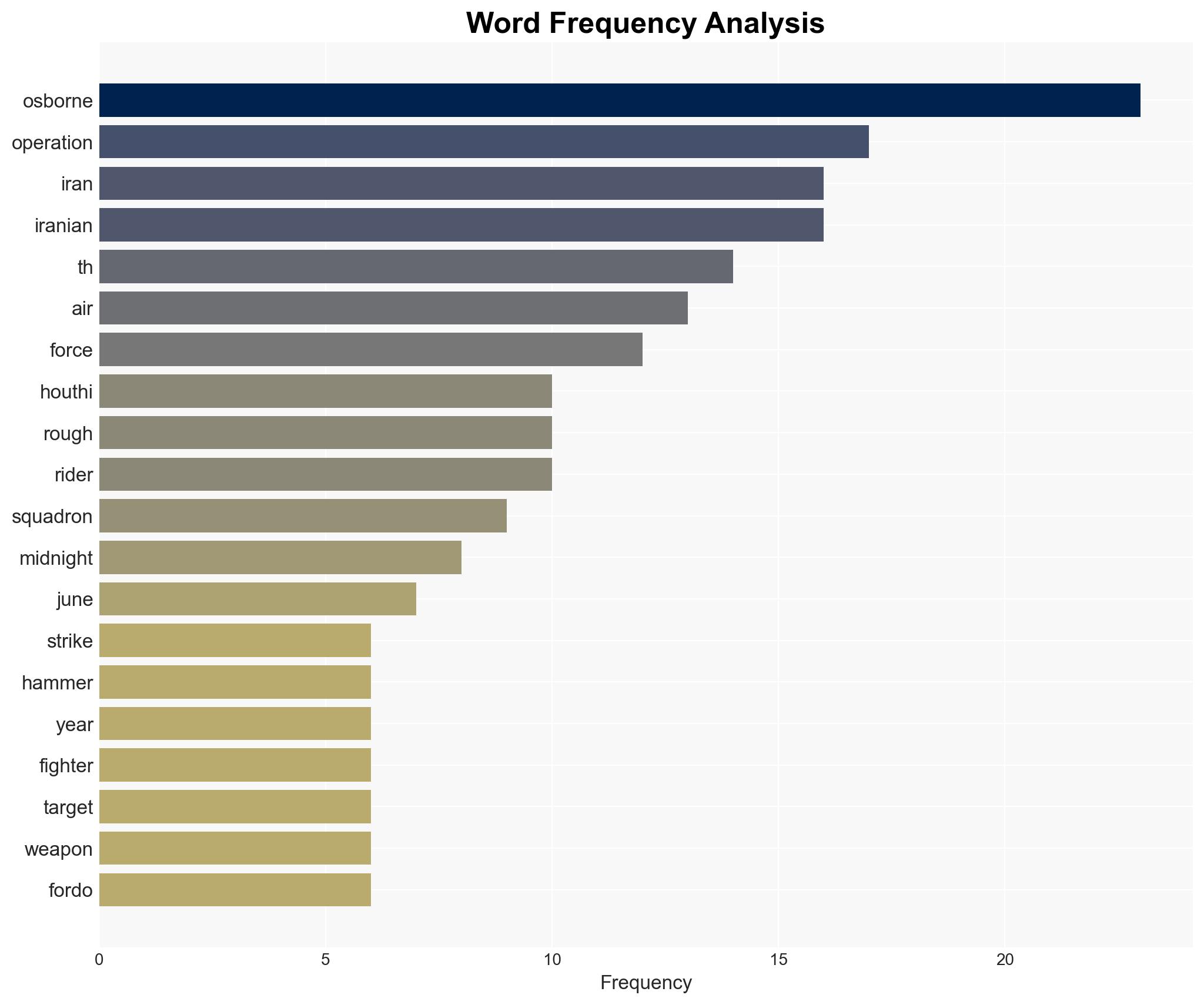F-35s Paved the Way for Strike Package During Operation Midnight Hammer
Published on: 2025-11-25
AI-powered OSINT brief from verified open sources. Automated NLP signal extraction with human verification. See our Methodology and Why WorldWideWatchers.
Intelligence Report:
1. BLUF (Bottom Line Up Front)
The strategic deployment of F-35s during Operation Midnight Hammer effectively neutralized Iranian air defenses, facilitating a successful strike on nuclear facilities. With a high confidence level, the most supported hypothesis is that this operation significantly degraded Iran’s nuclear capabilities and air defense systems. Recommended actions include maintaining heightened readiness for potential Iranian retaliation and leveraging this operational success to strengthen diplomatic negotiations.
2. Competing Hypotheses
Hypothesis 1: The primary objective of deploying F-35s was to degrade Iran’s nuclear capabilities and air defense systems, thereby reducing regional threats and enhancing U.S. strategic positioning in the Middle East.
Hypothesis 2: The operation was primarily a demonstration of U.S. military capabilities and resolve, aimed at deterring Iran and reassuring regional allies of U.S. commitment to their security.
Hypothesis 1 is more likely given the detailed account of the operation’s tactical success in neutralizing air defenses and striking nuclear sites, which aligns with long-term U.S. strategic goals of non-proliferation and regional stability.
3. Key Assumptions and Red Flags
Assumptions: The operation was executed without significant intelligence leaks; Iranian retaliation capabilities are limited post-strike.
Red Flags: Potential underestimation of Iran’s asymmetric warfare capabilities; reliance on a single source (Lt. Col. Aaron Osborne) for detailed operational success.
Deception Indicators: Iran’s public response may downplay the operation’s impact to preserve domestic and international image.
4. Implications and Strategic Risks
The operation may escalate regional tensions, prompting Iran to retaliate through asymmetric or cyber means. It could also trigger political backlash from Iranian allies, complicating diplomatic efforts. Economically, disruptions in oil markets are possible if Iran targets regional infrastructure.
5. Recommendations and Outlook
- Enhance regional intelligence and surveillance to anticipate and mitigate potential Iranian retaliatory actions.
- Engage with allies to reinforce collective security measures and diplomatic channels to manage escalation.
- Best Case Scenario: Iran refrains from significant retaliation, and diplomatic negotiations resume with increased leverage for the U.S.
- Worst Case Scenario: Iran launches a series of asymmetric attacks, destabilizing the region and disrupting global oil supply.
- Most Likely Scenario: Limited Iranian retaliation occurs, primarily through cyber operations or proxy engagements, with manageable regional impact.
6. Key Individuals and Entities
Lt. Col. Aaron Osborne, commander involved in the operation, provided key insights into the mission’s execution and success.
7. Thematic Tags
Structured Analytic Techniques Applied
- Cognitive Bias Stress Test: Expose and correct potential biases in assessments through red-teaming and structured challenge.
- Bayesian Scenario Modeling: Use probabilistic forecasting for conflict trajectories or escalation likelihood.
- Network Influence Mapping: Map relationships between state and non-state actors for impact estimation.
Explore more:
National Security Threats Briefs ·
Daily Summary ·
Support us





